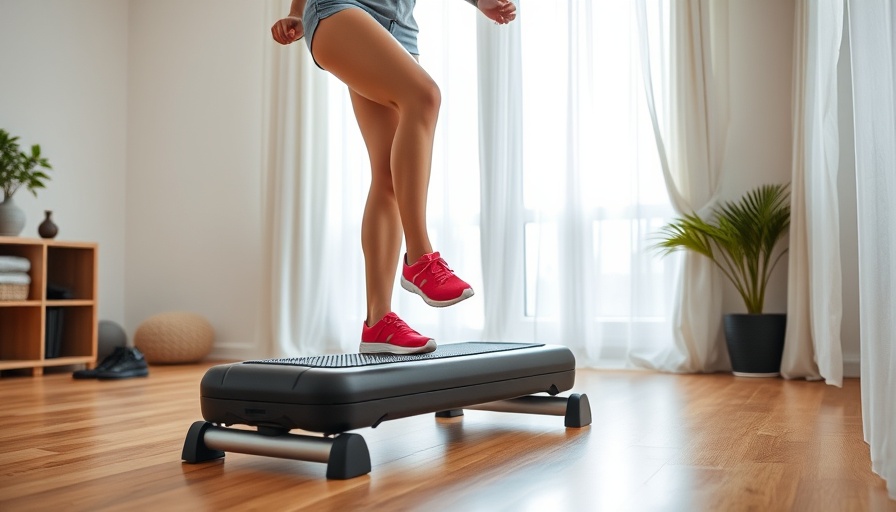
The Importance of Adapting Your Fitness Routine
In life, change is not only inevitable; it is often necessary for growth. This is especially true in fitness. As outlined in the insightful video from Fitness Blender, adapting your workout routine to fit the ever-evolving seasons of life can enhance not only your physical well-being but also your mental and emotional resilience. For many, especially within the SDA faith community, this reflection on physical health is interwoven with spiritual wellness. The understanding that our bodies go through phases, just as our lives do, can empower us on our fitness journeys.
In the video 'Mindset Tip: Adapt Your Fitness Routine in Different Seasons of Life,' the conversation centers around personal growth in fitness, inspiring us to reflect on our own journeys and adapt accordingly.
Understanding the Shifts in Our Lives
Experiencing different life stages can require different fitness approaches. What works wonderfully during one chapter may just not align with what we need in another. Just as the seasons change, from vibrant springs to restful winters, we must permit ourselves to shift our fitness practices. This is not just about physical health; it's a holistic understanding of nurturing our bodies as gifts from God. Each stage of life brings unique challenges: - **Career Milestones:** Increased responsibilities may demand our time, requiring quicker, efficient workouts. - **Family Needs:** Parenting or caregiving can shift priorities from intense workout regimens to shorter, more accessible routines. - **Aging:** As we age, we may need to focus more on flexibility and stabilization than on high-intensity training.
Encouraging Self-Compassion in Fitness
A profound insight shared in the video is the importance of self-compassion in our fitness journeys. It's natural to feel guilty when we can't maintain the intensity we once enjoyed. However, the concept of grace—so central to the SDA faith—teaches us to embrace our current capabilities without judgment. It’s okay to acknowledge when to dial back the intensity or try new activities that align better with our current energy and motivation levels. Listening to our bodies can foster a kinder relationship with fitness and serve as a reminder that health is not a destination, but a lifetime journey.
Practical Tips for Shifting Your Fitness Routine
Adapting your routine doesn’t have to be overwhelming. Here are some practical suggestions to smoothly transition your fitness practices: - **Assess Your Current Needs:** Reflect on whether your workouts align with your present lifestyle. Are high-intensity sessions still feasible? Or would a moderate approach prove more beneficial? - **Experiment with Different Styles:** Consider exploring low-impact activities like yoga or swimming, which are often kinder to the body and still provide substantial benefits. - **Incorporate Team or Family Workouts:** Engage with others in your community. Workouts with friends or family can create motivation and enhance accountability, making fitness more enjoyable.
Emotional and Human Interest Angles
From a personal perspective, many within the SDA community may find resonance in the collective experience of transforming daily routines due to changing environments or life responsibilities. Sharing these experiences can foster deeper connections within the community, encouraging dialogue about our respective journeys with health and faith. Many may arrive at the realization that adapting isn’t just about moving through workouts—it’s about moving through life with intention, joy, and faith.
Connection to Faith and Community
The premise of adapting our physical routines is also mirrored in spiritual practices within the SDA community. Just as we grow spiritually, our bodies and fitness journeys reflect those changes. Lessons drawn from scripture, combined with personal experiences, can illuminate pathways for nurturing our bodies. Group activities, whether they involve exercise or service, highlight the principle of fellowship, showing how our journeys are interconnected and supported.
Conclusion: Embrace the Seasons of Change
In closing, as we embrace the advice from the Fitness Blender video “Mindset Tip: Adapt Your Fitness Routine in Different Seasons of Life”, remember the grace that comes from adaptation. The challenge lies not in the rigidity of a workout plan, but rather in recognizing our unique paths and responding with kindness to ourselves. Fitness is not confined to intensity alone; it encompasses joy, community, and growth.
So, as you navigate the changes in your life, consider how your fitness routine can evolve in tandem. Allow yourself the grace to adapt and discover methods that align with this season of your life. Remember, our worth is not determined by the heaviness of the weight lifted or the duration of our workout, but by our continuous journey toward health and well-being.
Take a moment to reflect on your unique fitness journey and engage with others in your community about their transformations. Sharing experiences can foster deeper connections and build a supportive network, reinforcing that in our various seasons of life, we are not alone. And as always, stay active and embrace the path you've chosen.
 Add Row
Add Row  Add
Add 




Write A Comment